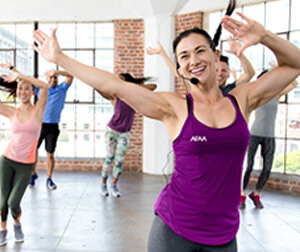
Mixing high-intensity workouts with large muscle groups is the key to HIIT. It is important to maximize the effort and energy you put in for a short amount of time. A good HIIT program involves a lot of work in large muscle groups combined with continuous high intensity training. It is important to know how to move between different muscle groups. If you want to get the best results from your HIIT workout, you'll need to master these three main types of exercise.
TabataHIIT
Experts agree that Tabata-HIIT is the most effective high-intensity interval training exercise. It emphasizes short bursts and intense exercise with rest periods in between. Tabata, unlike HIIT, is more intense than the average person's perceived exertion. Tabata will help you burn more calories than other types of HIIT.
Tabata training results vary from person to person. This is due to factors such as how intensely you train, how much weight you have, and your genetics. A recent study done by ACE Fitness revealed that Tabata training can result in a loss of between 240-360 calories over a 20 minute period. Before you start a high-intensity exercise program, make sure to consult your doctor if you're new to this type of workout. You should always keep an eye on your heart rate, and seek medical attention if there are any symptoms such as difficulty breathing or pain.

HIIT for full-length
You can increase your heartbeat and burn lots calories by using sprints, bodyweight exercise, and light weights during a full HIIT workout. HIIT exercises can be fun and challenging but never get boring. There are many ways to do it. A moderate HIIT training session should last for 30 minutes. HIIT can burn between 350 and 390 calories per session. A slow, outdoor walk is a great cooling down after a hard workout.
The benefits of HIIT work outs last well beyond the exercise. Studies have shown HIIT has a positive effect on cardiovascular function, VO2 max, strength, and endurance. However, a true HIIT training program can have longer rest periods and higher intensity levels than a modified one. Both cases can result in fat loss. It is important to be mindful of the time you spend working out. It is best to take less time if your workout lasts longer than one hour.
Modified HIIT
A Modified HIIT workout is an exercise program with short periods of intense activity that will help you burn more calories than a typical aerobic exercise program. This workout is good for people of all fitness levels and can be done for twenty to thirty minutes. Although this workout is a bit more demanding than a typical aerobic routine, it is safe and can be done by plus-size people. To avoid discomfort, wear comfortable shoes while doing modified HIIT.
While HIIT is an effective workout for people with limited time and energy, it should not be performed on a daily basis. You can inflict injury and fatigue on your body, as well as damage it. Reduce the amount of time you spend working out to just one or two times per week. You should balance your workouts with easy and rest days. You can also do a HIIT routine that includes circuits of just one or two exercises.

Short HIIT
HIIT sessions are a great way for busy people to get exercise. You will burn calories and strengthen your body with these short bursts. You can choose to use gym equipment or do all the work with your body weight. You will get the best results if you do a 8-minute workout and alternate between two sets high intensity exercise. You can then rest for 1 minute. This workout is a great choice for people with various fitness levels and goals.
A short HIIT training session is a great way of improving your mood. Oregon Health & Science University found that short bursts HIIT exercise stimulate brain areas related to memory and learning. These workouts reduce the risk of depression by stimulating the brain region associated with mood and joy. Best of all, they are easy to do at home! These tasks can be performed at home. If you can spare 10 minutes a day, you'll reap the benefits in no time.
FAQ
What does Exercise do for your Body?
Exercise can help you lose weight, increase muscle mass, improve energy levels, reduce stress and improve your sleep quality. Exercise can improve mood, self-esteem and productivity as well as reduce the risk of developing heart disease.
What is Nutrition Good for?
Nutrition helps your body function properly by supplying all the nutrients needed for proper growth and development. To ensure that your body receives adequate nutrition, it is best to eat a balanced meal with lots of fruits and vegetables, lean protein, whole grain, as well as healthy fats.
How does caffeine affect my sleep?
Caffeine influences how quickly and how well you fall asleep. Caffeine makes falling asleep easy by causing drowsiness. But caffeine keeps you awake longer, making it harder to fall asleep again. If you drink coffee or energy drinks right before bedtime, try drinking them later in the evening instead.
Which Is More Important: Exercise, Diet, or Sleep?
It all depends on your goals. It is important to lose weight. Exercise is important for building muscle mass. The last factor is sleep, which only impacts how well you perform during your day.
What is the importance and benefits of good nutrition for your health?
Good nutrition is vital for our health. A healthy diet includes fruits, vegetables, whole grains, lean protein, and dairy. A healthy diet will help you stay active and fit, which in turn leads to better overall health.
Statistics
- Physical activity confers the following maternal and fetal health benefits: a decreased risk of pre-eclampsia, gestational hypertension, gestational diabetes (for example, 30% reduction in risk) (who.int)
- Globally, 28% of adults aged 18 and over were not active enough in 2016 (men 23% and women 32%). (who.int)
- One study showed that adults who watch more than 4 hours of television daily had an 80% higher risk of death from cardiovascular disease. (heart.org)
- In 2018, the World Health Assembly agreed on a global target to reduce physical inactivity by 15% by 2030 and align with the Sustainable Development Goals. (who.int)
External Links
How To
How to Burn Belly Fats Quicker
Belly Fat is often considered a problem for those who want to lose weight. It's actually a good thing, in fact. It's the amount of fat stored around your stomach that protects your organs from getting damaged. So let's see how to burn belly fat fast.
The main factors that contribute to our body fat accumulation are stress and inactivity. The cortisol hormone stimulates stress which makes us hungry. Cortisol is responsible for an increase in insulin levels. The excess calories are stored as fat by insulin. A lack of sleep leads to adrenaline being released into the system which causes an increased appetite. These extra calories can also be reduced by exercise
There are many ways you can reduce belly fat. Depending on your budget, you can try each one. Here are some quick tips to get rid of belly weight.
-
Reduce your food intake. You should eat smaller meals throughout the day than you would if you ate three big meals. This will result in fewer calories.
-
Make sure you drink plenty of water. Water flushes out toxins, and keeps your body hydrated. Drinking water prior to every meal will ensure that you are satisfied for longer periods of time and won't eat too much.
-
Avoid unhealthy snacks. If you're looking for quick fixes, snack foods like chips, cookies, candies, etc. It might sound tempting. These sugary treats have lots of empty calories so avoid them. Instead, opt for healthy alternatives such as fruits, vegetables and whole grains.
-
Do strength training exercises at least three times per week. Strength training increases muscle mass, which can help you burn more calories while still resting. It strengthens bones muscles ligaments, tendons and the heart.
-
Walk or stretch regularly. Stretching increases flexibility and mobility. It also reduces back pain. Walking for 30 minutes is a great way to burn calories.
-
Reduce alcohol intake. You should cut down on alcohol consumption. It adds no nutritional value to your diet.
-
Slowly lose weight. To lose weight, the first step is to determine what your current weight. Calculate your ideal weight by adding approximately 5% to 10% of the total weight. Once you have established your ideal weight, reduce your daily calorie intake by 500 to 1000 calories each day until you achieve your goal.
-
Avoid processed foods. These foods are high-in salt, sugar, as well as preservatives. Processed foods are often very convenient but don't provide enough nutrients to keep you healthy.
-
Don't skip breakfast! Eating breakfast improves concentration, memory, and energy level. Protein (like eggs), fiber and complex carbohydrates (like oatmeal) should be included in breakfast.
-
Have regular bowel movements. Constipation and irregularity can cause gas and bloating. To prevent this, drink plenty of water and increase fiber intake.